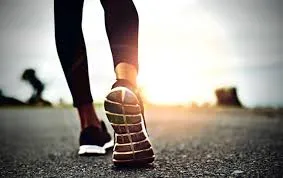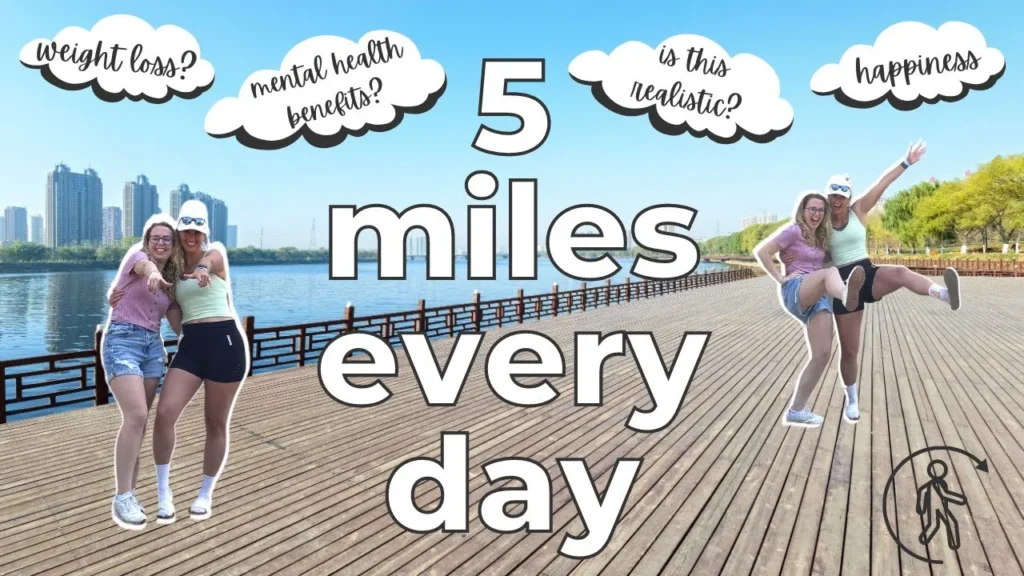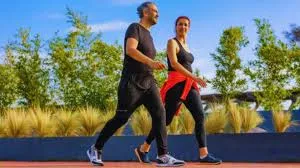A stroll, a leisurely walk through a neighborhood, brisk walking, or even hiking through woods is a workout in its simplest form – walking. You walk five miles, and it brings real benefits to everyone. But how long does it actually take to walk five miles? We’ll learn about what factors influence a person’s walking speed as well as how to estimate the time period needed to cover five miles of walking distance.
The Typical Amount of Time to Walk 5 Miles
You might think that walking five miles is a marathon distance and takes a lot of time to complete. But as a matter of fact, the average individual is capable of walking one mile within 15-20 minutes, and that’s on a smooth surface. If so, how much time is required to walk an accumulative distance of five miles?
In this case, every individual would only require 1 hour and 40 minutes to cover this distance on a moderate walking speed of 20 minutes per mile. If the trail is even and free of obstacles, then this will be the maximum amount of time required.
But wait, it’s not always that straightforward. For a variety of reasons, you may take longer or even shorter on your walk. So, let’s break into the nitty-gritty.
Walking Time Elements
On average, it takes about 1 hour and 40 minutes to walk 5 miles, but this can change based on a couple of factors:
1. Walking Pace
Walking pace is critical when it comes to how long it can take to walk 5 miles. For example, a person that enjoys walking briskly would expect to take slightly over 1 hour to walk 5 miles, as this is around 12 minutes per mile.
On the other hand, someone that enjoys taking a stroll would be closer to taking 2 hours as this is around 25 minutes a mile. Generally, though, people’s times are somewhere in between these two extremes.
2. Fitness Level
Someone that exercises regularly will undoubtedly expect to walk faster compared to someone that is less fit. A study by the British Heart Foundation shows a fit person registering a walk at around 15 minutes per mile, which would effectively take 1 hour and 15 minutes to complete 5 miles. So, if you are used to this sort of physical activity, expect to move faster than a person who does not exercise often.
3. Terrain and Conditions
The landscape you are walking on greatly affects the time it will take you to complete the 5 miles. A smooth and level sidewalk would permit a person to be able to walk at a constant efficiency. However, if you happen to go hiking on uneven trails and are going uphill, your pace will decrease.

It is possible for people in bad physical shape to take more than 1 hour 40 minutes to walk 5 miles, particularly when there are hills and steep inclines. Such extreme weather and some other weather conditions, like strong winds or very hot temperatures, can also decrease the pace of people walking on the surface.
4. Health and Energy Levels
Your pace might be significantly lowered or increased depending on your health and energy levels at a particular moment. If you have a cold, feel weak, or just have an underlying health issue, it is totally acceptable to pace yourself. Nonetheless, if you feel energized or do any form of exercise in the morning, you might be able to go for a longer walk.
5. Equipment & Footwear
The right individual walking shoes and footwear make all the difference during a walk, given that they are comfortable and well-fitted. On the other hand, poor footwear can slow you down due to discomfort. Walking shoes are supportive; therefore, most individuals experience good walking speeds when these shoes are worn.
How to Estimate Your Walking Time for 5 Miles
For individuals with no set estimates for factors that alter their walking time, there are many methods to estimate the time taken to walk 5 miles properly. For the sake of simplicity, here’s a way of estimation:
- Track your normal walk. An individual needs to use a fitness tracker or a stopwatch, which can easily measure the time over a mile for using ground and surfaces that are flat and familiar to the individual.
- Factor in uneven grounds. When going on hiking or if the environment is rough, increase your estimated time by roughly 5 to 10 minutes.
- Factor in breaks. If planning on going for a 5-mile walk, it is advised to take short breaks here and there to stretch or hydrate. Therefore, further extending the break gives the individual the ability to enjoy the scenery.

How Fast Do You Walk?
Let’s take a closer look. In the case where you want to walk 5 miles, these are the expectations depending on your walking speed:
| Walking Speed | Time per Mile | Total Time for 5 Miles |
|---|---|---|
| Brisk Walkers | 12 minutes | 1 hour |
| Moderate Walkers | 15 minutes | 1 hour 15 minutes |
| Casual Walkers | 20 minutes | 1 hour 40 minutes |
| Leisurely Walkers | 25 minutes | 2 hours |
If you walk at an average of 20 minutes a mile, it would take you just less than two hours to finish your 5-mile walk.
How Important Regular Walking Routines Are
Walking is an excellent method to remain engaged, work on your heart, and refresh your mind. While the time taken to walk 5 miles may alter, always keep in mind that with every step, you are getting closer to a better you. For beginners, it is fine to start off with shorter distances and gradually work up to 5 miles at later stages.

Conclusion
All in all, the duration of walking 5 miles highly relies on the pace you set, the type of land you walk on, your level of fitness, and the weather. An ordinary citizen walks 5 miles in approximately 1 hour and 40 minutes, however, this duration can vary depending on how much effort is put in.
In order to understand how long it would take to walk 5 miles, be sure to factor in your standard pace, the weather, and, since there may be some days when you are not feeling your best, that too. Keep in mind, no one is rushing you on a trek, and if you do not reach somewhere on time, it is perfectly fine. In this instance, covering distance is secondary to savoring the moments taken along the way.
What about you, how much time do you require walking 5 miles?










